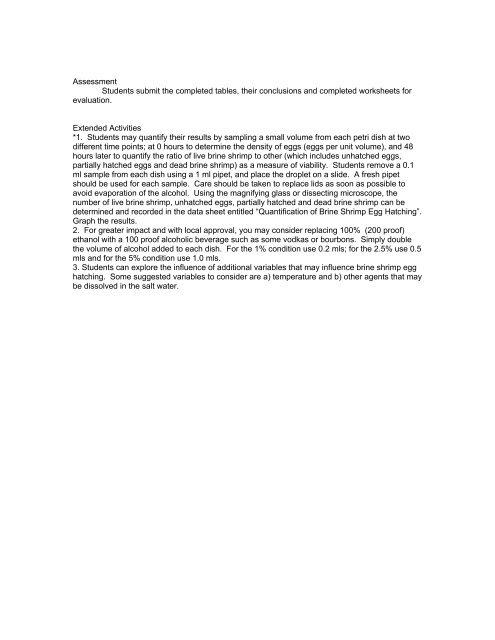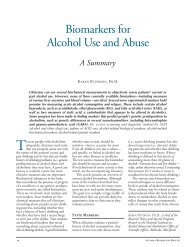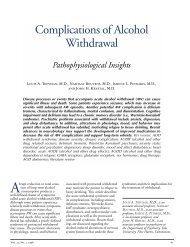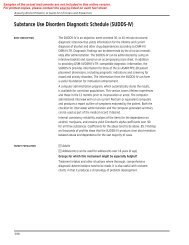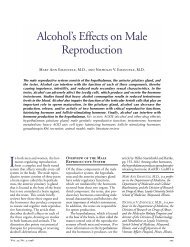Alcohol Syndrome (FAS) and Other Alcohol-Related Birth Defects
Alcohol Syndrome (FAS) and Other Alcohol-Related Birth Defects
Alcohol Syndrome (FAS) and Other Alcohol-Related Birth Defects
You also want an ePaper? Increase the reach of your titles
YUMPU automatically turns print PDFs into web optimized ePapers that Google loves.
Assessment<br />
Students submit the completed tables, their conclusions <strong>and</strong> completed worksheets for<br />
evaluation.<br />
Extended Activities<br />
*1. Students may quantify their results by sampling a small volume from each petri dish at two<br />
different time points; at 0 hours to determine the density of eggs (eggs per unit volume), <strong>and</strong> 48<br />
hours later to quantify the ratio of live brine shrimp to other (which includes unhatched eggs,<br />
partially hatched eggs <strong>and</strong> dead brine shrimp) as a measure of viability. Students remove a 0.1<br />
ml sample from each dish using a 1 ml pipet, <strong>and</strong> place the droplet on a slide. A fresh pipet<br />
should be used for each sample. Care should be taken to replace lids as soon as possible to<br />
avoid evaporation of the alcohol. Using the magnifying glass or dissecting microscope, the<br />
number of live brine shrimp, unhatched eggs, partially hatched <strong>and</strong> dead brine shrimp can be<br />
determined <strong>and</strong> recorded in the data sheet entitled “Quantification of Brine Shrimp Egg Hatching”.<br />
Graph the results.<br />
2. For greater impact <strong>and</strong> with local approval, you may consider replacing 100% (200 proof)<br />
ethanol with a 100 proof alcoholic beverage such as some vodkas or bourbons. Simply double<br />
the volume of alcohol added to each dish. For the 1% condition use 0.2 mls; for the 2.5% use 0.5<br />
mls <strong>and</strong> for the 5% condition use 1.0 mls.<br />
3. Students can explore the influence of additional variables that may influence brine shrimp egg<br />
hatching. Some suggested variables to consider are a) temperature <strong>and</strong> b) other agents that may<br />
be dissolved in the salt water.


